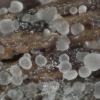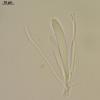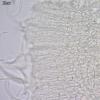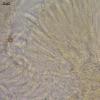
12-01-2026 22:02
Ethan CrensonHello all, I am hoping someone will have some ins

11-01-2026 20:35
Hello.A very tiny pyrenomycete sprouting sparsely

13-01-2026 18:55
Rees CronceStrossmayeria sp. on indet. decroticate hardwoodTh

13-01-2026 07:57
 Danny Newman
Danny Newman
cf. Bombardia on indet. decorticate woodAppalachia

13-01-2026 10:13
 Danny Newman
Danny Newman
Cordieritidaceae sp. on indet. wood w/ Hypoxylon s

13-01-2026 07:28
 Danny Newman
Danny Newman
Chlorociboria glauca on indet. decorticate logThe

13-01-2026 07:14
 Danny Newman
Danny Newman
Neodasyscypha cerina on indet decorticate logThe S

13-01-2026 09:10
 Danny Newman
Danny Newman
Dasyscyphella chrysotexta on indet. decorticate ha

13-01-2026 08:43
 Danny Newman
Danny Newman
Tricladium varicosporioides on indet. decorticate

13-01-2026 08:49
 Danny Newman
Danny Newman
Coccomyces sp. on fallen Rhododendron leavesPretty
Eriopezia sp. (probably)
Nina Filippova,
24-01-2013 13:40
Apothecia pustulate, grayish, translucent, disc surface minutely rough, outside smooth, 420 (70-510) x 100 mk., under the lens subiculum absent, but under microscope rough-walled subicular hyphae found at the base.
Excipulum textura prismatica, from prismatic to ellipsoid cells (9 x 5 mk in mid-lenght of excipulum), cells at the edge are longer, cylindrical, hair-like, subicular hyphae 1,7 mk broad, rough (incrusted); asci clavate, clamped, with amyloid pore, 58 x 7 mk; paraphyses cylindrical, slightly enlarged at tip, not branched and branched at the base in two parts, with one septum at base; spores ellipsoid and curved (allantoid), with two round guttules at the ends, non- or 1-septate, 9,4 (8,6-10,5) x 2,8 (2,6-3) mk.
It collected from conifer wood and bark in wet place (wood saturated with water, in bogged place), N60,893086° E68,677082°.
Hans-Otto Baral,
24-01-2013 15:16

Re : Eriopezia sp. (probably)
Maybe related to Parorbiliopsis. Eriopezia has a dark brown excipulum. What is the substrate?
Nina Filippova,
24-01-2013 21:24
Re : Eriopezia sp. (probably)
Thank you for your advises!, i will check, did not come across this genus before.





